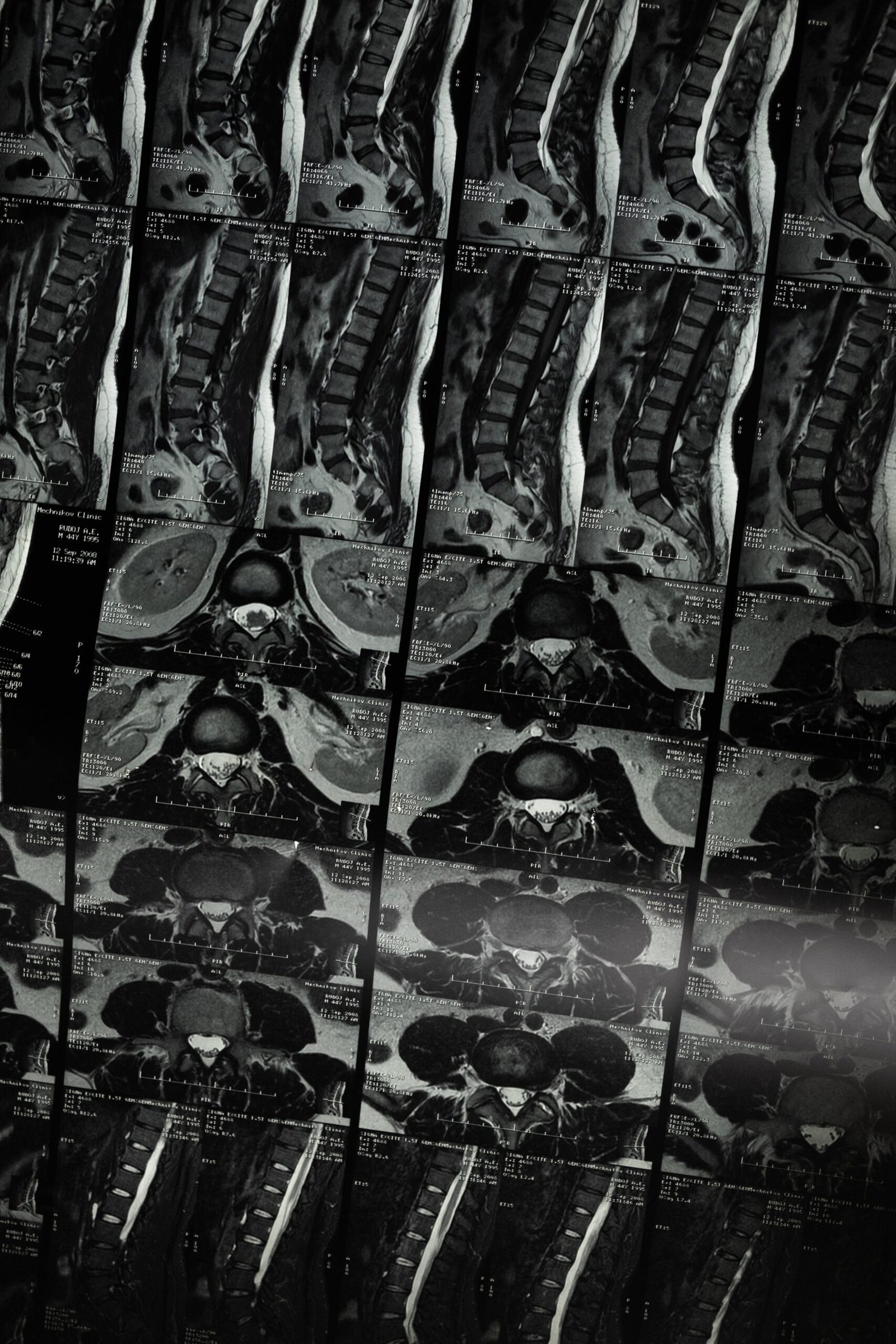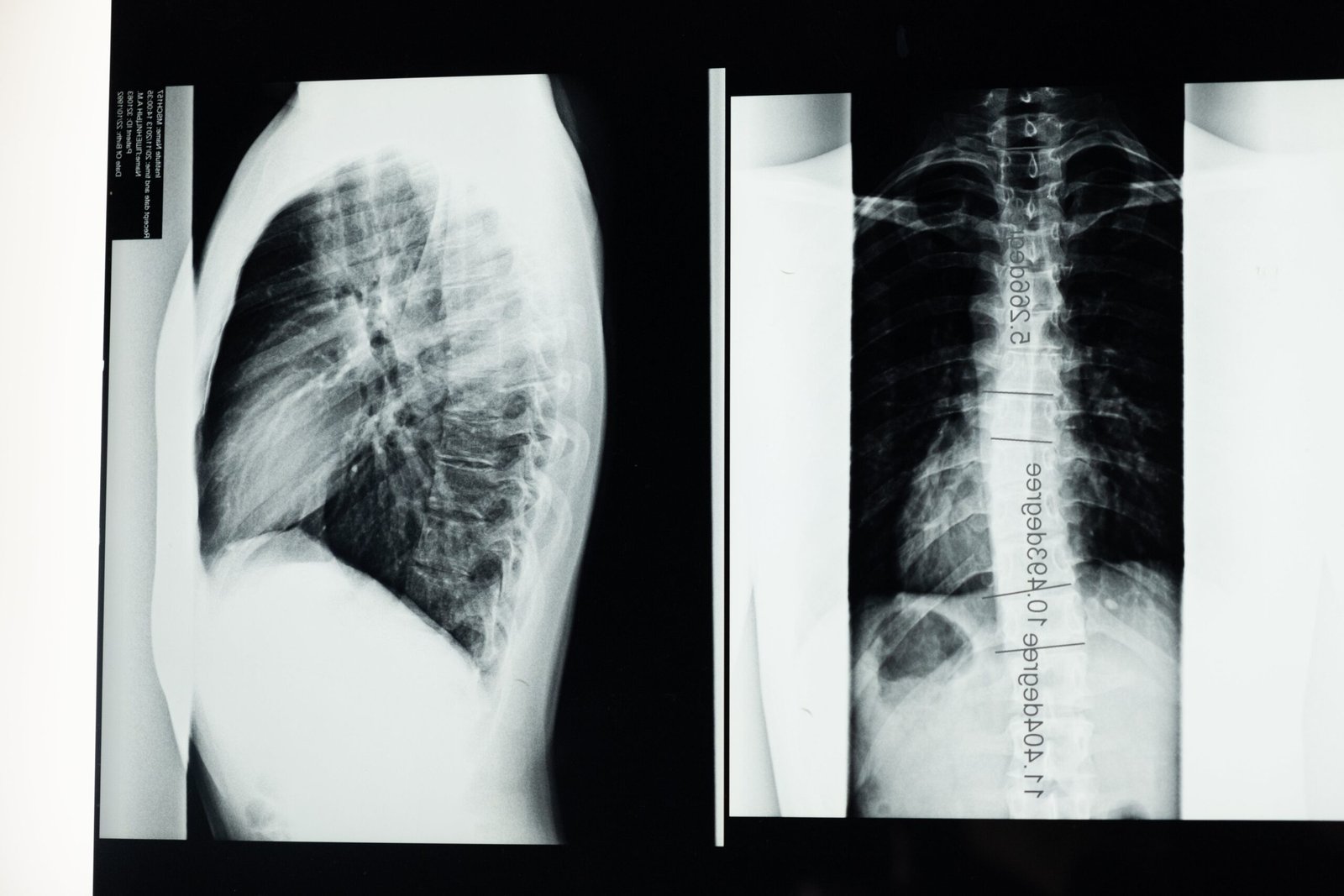
If you have scoliosis, you know that finding a comfortable sleep position can be a challenge. The curvature of your spine can cause discomfort and affect your quality of sleep. But fear not, because in this article, we will explore different sleep positions that can help alleviate some of the discomfort associated with scoliosis. By making a few adjustments and finding the position that works best for you, you can finally look forward to a restful and rejuvenating night’s sleep.

Alignment and Support
Importance of proper alignment
Proper alignment of the spine during sleep is crucial for maintaining good spinal health and reducing the risk of discomfort or pain. When you sleep in a position that promotes alignment, it allows your spine to rest in a neutral position, minimizing stress and strain on the muscles, ligaments, and discs. Proper alignment also helps to prevent any exacerbation of existing spinal conditions, such as scoliosis.
Role of support in sleep position
While proper alignment is important, adequate support is equally essential in maintaining a healthy sleep position. Support can help to distribute your body weight evenly and provide cushioning where needed. It prevents you from sinking too deeply into the mattress, which can lead to misalignment and discomfort. Supportive pillows and mattresses play a vital role in maintaining proper spinal alignment throughout the night.
Sleeping on Your Back
Benefits of sleeping on your back
Sleeping on your back, also known as the supine position, is widely regarded as one of the best sleep positions for overall spinal health. It allows your head, neck, and spine to align naturally, minimizing any potential strain on your back. Sleeping on your back can also help prevent the development or progression of scoliosis-related symptoms and alleviate pressure on the intervertebral discs.
Using a pillow under the knees
To enhance the benefits of sleeping on your back, consider using a pillow to support your knees. Placing a pillow under your knees helps maintain the natural curve of your lower back, reducing strain on the lumbar spine. This additional support promotes proper alignment and can alleviate any discomfort you might experience with scoliosis.
Placing a rolled towel under the lower back
In addition to using a pillow under your knees, you may find it helpful to place a rolled towel under the arch of your lower back for extra support. This can help maintain the natural curvature of your spine and further promote proper alignment while sleeping on your back.

Sleeping on Your Side
Advantages of side sleeping
Sleeping on your side can also be a beneficial sleep position for individuals with scoliosis. This position can help relieve pressure on the spine and promote better airflow during sleep. Side sleeping is especially beneficial for those with scoliosis who find it uncomfortable to sleep on their back. Additionally, side sleeping can reduce the likelihood of snoring, which can lead to better quality sleep.
Choosing the right mattress and pillow
To optimize your side sleeping position, it is important to choose a mattress and pillow that provide adequate support. A medium-firm mattress is generally recommended for side sleepers, as it offers a balance of comfort and support. Similarly, a pillow that fills the space between your head and shoulder helps maintain proper alignment of your neck and spine. Proper support can alleviate any pressure points and provide a more comfortable sleep for individuals with scoliosis.
Using a knee pillow
For added support and alignment, you may consider using a knee pillow when sleeping on your side. A knee pillow helps maintain proper spacing between the knees, hips, and spine, reducing strain on the lower back and hips. By keeping your spine properly aligned while side sleeping, you can improve your overall sleep quality and minimize any discomfort associated with scoliosis.
Placing a pillow between the legs
In addition to using a knee pillow, placing a pillow between your legs can provide even more support and alignment. This helps to further alleviate pressure on the hips and lower back, promoting a more comfortable sleep position for individuals with scoliosis.
Sleeping in the Fetal Position
Benefits of the fetal position
Sleeping in the fetal position, where you curl up on your side with your knees drawn towards your chest, can be beneficial for individuals with scoliosis. This position can help to open up the space between your vertebrae and relieve pressure on the spinal discs. Sleeping in the fetal position may also help reduce any discomfort associated with scoliosis, particularly if you have a lumbar (lower back) curve.
Maintaining proper spinal alignment
While the fetal position can offer some relief, it is important to maintain proper spinal alignment even when curled up on your side. To do this, ensure that your neck is aligned with the rest of your spine. Consider using a body pillow, placed between your knees and hugged by your arms, to provide support and maintain proper alignment of your spine and neck.
Using a body pillow
Using a body pillow can be particularly beneficial for individuals with scoliosis who prefer sleeping in the fetal position. A body pillow helps cushion your body, provides support, and helps maintain proper alignment throughout the night. By effectively distributing your body weight and minimizing any potential strain, a body pillow can contribute to a comfortable and restful sleep for individuals with scoliosis.

Elevating Your Head
Using an adjustable bed or pillows
Elevating your head slightly during sleep can help alleviate any breathing difficulties or acid reflux that may be associated with scoliosis. An adjustable bed that allows you to elevate the upper body is an excellent option for achieving the desired elevation. Alternatively, you can use multiple pillows to prop up your upper body, ensuring that your head and neck are properly supported.
Avoiding excessive elevation
While it may be tempting to elevate your head significantly to find relief, it is important to avoid excessive elevation. Excessive elevation can lead to unnatural spinal curvature, which can cause discomfort and potentially worsen scoliosis symptoms. It is best to find a comfortable and moderate elevation that keeps your head and neck aligned with your spine.
Avoiding Certain Sleep Positions
Sleeping on the stomach
Sleeping on your stomach is generally not recommended for individuals with scoliosis. This position can place unnecessary stress on the neck and spine, leading to discomfort and misalignment. It can also restrict proper breathing and cause strain on the muscles and ligaments surrounding the spine. If you prefer sleeping on your stomach, it is advisable to gradually transition to a more supportive sleep position, such as sleeping on your back or side.
Twisting the spine
Twisting the spine, such as when one leg crosses over the other while sleeping, should be avoided for individuals with scoliosis. Twisting the spine can contribute to misalignment and discomfort. It is important to maintain a neutral and aligned position to minimize stress on the spinal column.
Sleeping with inadequate support
Regardless of your sleep position, it is crucial to ensure that you have adequate support for your head, neck, and spine. Sleeping without adequate support can lead to poor posture, strain on the muscles, and the worsening of scoliosis-related symptoms. Investing in a supportive pillow and mattress can greatly contribute to your overall sleep comfort and spinal health.
Consulting with a Healthcare Professional
Importance of individualized advice
While these tips can be helpful, it is important to consult with a healthcare professional, such as a physical therapist or chiropractor, for personalized advice regarding the best sleep positions for your specific case of scoliosis. They can assess your condition, take into account any other medical factors, and provide guidance tailored to your individual needs.
Seeking guidance from a physical therapist or chiropractor
Physical therapists and chiropractors are professionals who specialize in musculoskeletal health and can provide valuable insights into the best sleep positions and techniques to mitigate scoliosis-related discomfort. They can design specific exercises, stretches, and recommendations based on your condition and help you achieve a healthier sleep posture.
Experiencing Pain or Discomfort
Adjusting sleep positions for comfort
If you experience pain or discomfort during sleep, it may be necessary to make further adjustments to your sleep position. Listen to your body and experiment with different sleeping positions, pillows, or orthopedic aids to find what brings you the most relief. Remember to maintain proper spinal alignment and ensure that you are adequately supported throughout the night.
Using heat or cold therapy
Heat or cold therapy can provide temporary relief for sore muscles or painful areas associated with scoliosis. Applying a heat pack or using a cold compress before bedtime can help relax tense muscles and reduce inflammation, promoting a more comfortable sleep. However, it is important to consult with a healthcare professional before implementing any new therapy to ensure it is safe and appropriate for your specific condition.
Seeking medical advice if pain persists
If you are experiencing persistent or worsening pain, it is crucial to seek medical advice from a healthcare professional. They can assess your symptoms, perform a thorough examination, and recommend appropriate treatment options to alleviate your pain and manage your scoliosis effectively.
The Role of Pillows and Mattresses
Choosing the right pillow
Selecting the right pillow is crucial for maintaining proper spinal alignment and comfort during sleep. Consider factors such as the material, thickness, and shape of the pillow. Memory foam pillows, for example, can conform to the contours of your head and neck, providing personalized support. It is important to choose a pillow that suits your sleep position and offers the necessary support for your specific needs.
Selecting a supportive mattress
A supportive mattress is essential in providing the necessary cushioning and spinal alignment while sleeping with scoliosis. Look for a mattress that offers a good balance of comfort and support, taking into account personal preferences and any specific recommendations from healthcare professionals. Testing different mattresses to find the one that suits your body and sleep position is a worthwhile investment in your overall sleep quality and spinal health.
Considering special orthopedic pillows or mattresses
For individuals with scoliosis, special orthopedic pillows or mattresses may provide additional support and comfort. These products are designed specifically to promote proper spinal alignment and alleviate pressure points. While they may require a greater financial investment, the potential benefits can significantly improve your overall sleep experience and spinal health.
Additional Tips and Considerations
Maintaining good posture during the day
While sleep position is important, it is also crucial to maintain good posture during the day. Engage in activities that promote good posture, such as regular stretching, strengthening exercises, and maintaining proper ergonomics while sitting or standing. By enhancing your overall posture, you can further support your spine and minimize any discomfort associated with scoliosis.
Engaging in regular exercise
Regular exercise is vital for maintaining a healthy spine and overall physical well-being. Low-impact exercises, such as walking, swimming, or yoga, can help improve muscle strength, flexibility, and posture. Consult with a healthcare professional to develop an exercise routine tailored to your specific needs and capabilities.
Using relaxation techniques before bedtime
Incorporating relaxation techniques into your bedtime routine can help prepare your body and mind for a restful sleep. Practices such as deep breathing, meditation, or gentle stretching can help relax tense muscles, reduce stress or anxiety, and promote a calm state of mind. By unwinding before bed, you can create a more conducive environment for a comfortable and peaceful sleep.
In conclusion, finding the best sleep position for individuals with scoliosis is essential for promoting optimal spinal health and reducing discomfort. Whether sleeping on your back, side, or in the fetal position, proper alignment and support are key. Consult with a healthcare professional for personalized advice and consider using pillows and mattresses that provide adequate support. Additionally, adopting good posture habits during the day, engaging in regular exercise, and incorporating relaxation techniques into your bedtime routine can further enhance your overall sleep quality and spinal well-being. By taking these considerations into account and making necessary adjustments, you can achieve a more comfortable and restful sleep despite having scoliosis.





